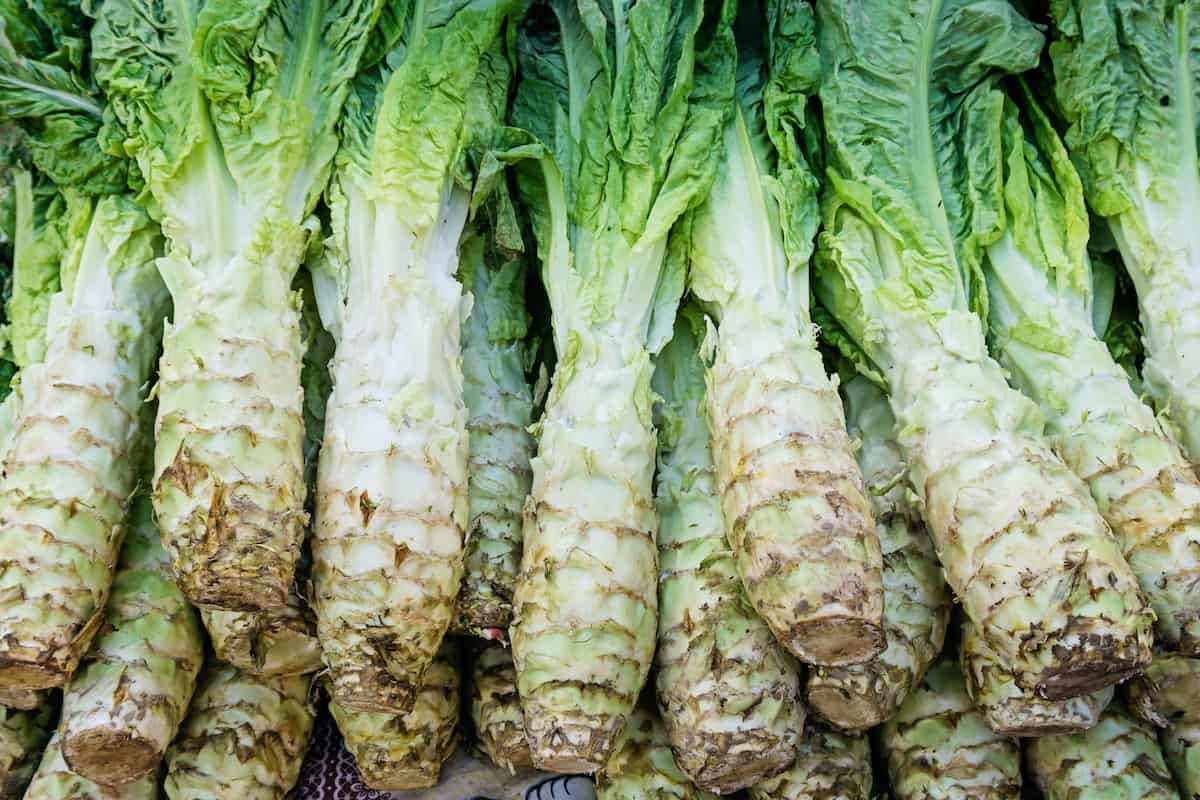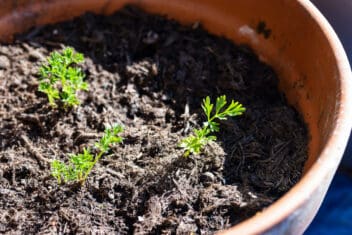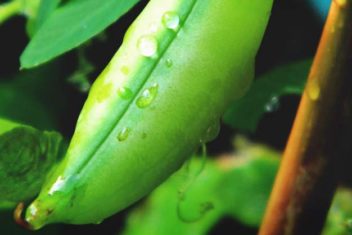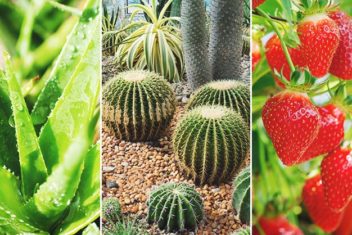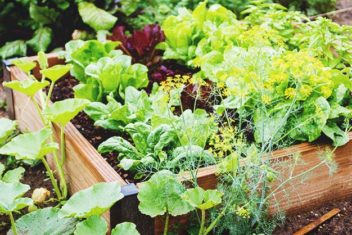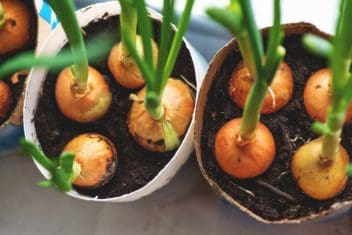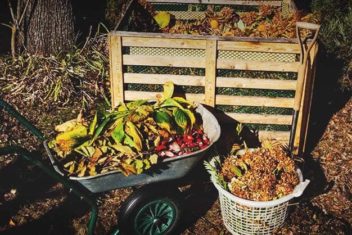Celtuce is an intimidating looking vegetable, but don’t let its fearsome appearance put you off. It’s a wonderful tasting plant and super easy to grow.
It tastes something like if celery, lettuce, and asparagus got all blended together into one crisp, juicy stalk.
Celtuce is perfect as a salad topping. Despite its appearance, it’s mild and you’ll be surprised at its flavor: nutty with a hint of smoke.
While it isn’t incredibly well-known in the U.S., it’s gaining popularity among chefs and home cooks for its versatility and flavor. Ready to learn more?
What is Celtuce?
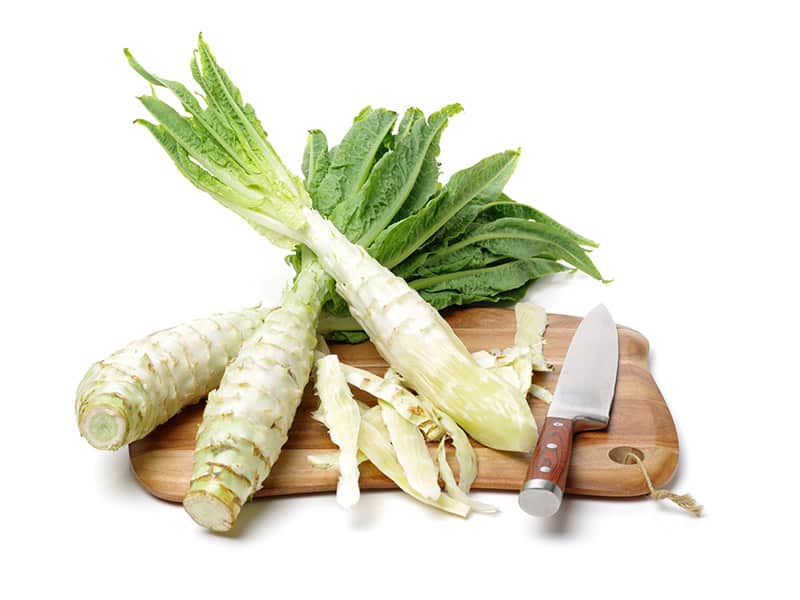
Celtuce is an annual plant and a variety of lettuce. Instead of growing it for its leaves, celtuce is grown for its stalk. You can eat the leaves, but they’re pretty bitter.
Sometimes called asparagus lettuce, stem lettuce, and celery lettuce, celtuce is often sold in Chinese markets where you may see it called wosun or qingsun. It looks like a broccoli stalk on the outside and a bit like a cucumber without the seeds on the interior.
The plant originated in China and was introduced to Europeans in the late 1800s.
Varieties of Celtuce
You probably won’t find many celtuce cultivars at most local nurseries, but online markets carry a variety of seeds.
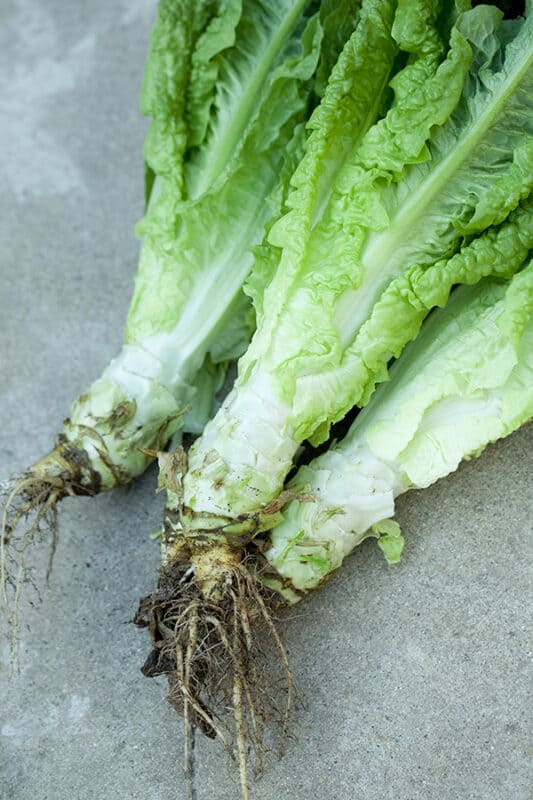
Most celtuce is sold as a generic variety and the actual type may not be listed.
- Max Green: This is an early variety that is cold tolerant and reliable. ‘Max Green’ takes up to 85 days to mature.
- Balady Aswan: This popular variety matures in 90 to 100 days. The stalk to be 14 inches in length before harvesting.
- Purple Sword: A cool weather lover, purple sword grows best at 60°F to 70°F. Best for fall planting in most regions.
- Spring Tower: This is a broadleaf variety. It’s cold tolerant and suitable for fall planting.
- Summer 38: This variety is heat and cold resistant. It’s good for spring, summer, and fall planting. It’s slow to bolt in the summer.
How to Grow Celtuce
Celtuce grows well in zones 4 to 9. The optimal growing temperature is between 55°F to 70°F, but even if you get a bit warmer in your area, try celtuce as it’s a forgiving plant.
Basically, if you can grow lettuce in your region, you should be able to grow celtuce.
Partial shade to full sun is best. If the sun is too hot, the leaves will wilt. If you live in an area with very harsh sun, provide shade in the heat of the afternoon..
A pH of 6.1 to 6.5 is ideal. Soil should be a light, sandy loam with excellent drainage.
Celtuce is a cool-weather crop like lettuce. Plant while it’s still cool in spring or late summer. Or, plant in the early fall for a late fall harvest.
Container Planting
Celtuce will grow in a container, but you must use a proper medium. Like lettuce, celtuce will bolt quickly to seed if it doesn’t get enough water, so choose a potting mix that retains moisture.
Use a large container because celtuce takes up quite a bit of space and needs at least 12 inches between each potted plant.
Planting Seed
Plant celtuce seeds directly in the garden. Plant the seeds less than 1/4 inch deep. Don’t compact or press the soil as celtuce needs light to germinate.
Plant in rows about 6 inches apart. Once the celtuce germinates and is big enough, thin out to 12 inches apart.
You can start the celtuce indoors 6 weeks before the last frost and transplant out as long as you’re careful not to damage the roots.
Plant every 3 weeks for a continuous supply.
Space celtuce seeds 6 inches apart and thin them out to 12 inches apart when bigger. The leaves spread out on celtuce about 12 to 15 inches across, depending on the variety, so ensure sufficient airflow.
Caring for Celtuce
Prior to planting, dig in well-rotted manure or a good quality balanced fertilizer. No further feeding should be required. If you find the celtuce is slow-growing or struggling, apply a liquid fertilizer to help it pick up.
You don’t want to apply too much nitrogen to the plant, so do a soil test before deciding to add additional fertilizer.

Celtuce needs the soil to remain moist, but not soaking. Water regularly at the base. Don’t let the soil dry out.
You don’t need to prune celtuce, though you can remove some leaves to eat as the plant grows. Also, remove any leaves that appear diseased or dying.
Keep the soil moist and weeds at bay by mulching. Use leaves, hay, straw, or any other organic mulch.
Companion Planting for Growing Celtuce
Plant celtuce with:
- Onions
- Strawberries
- Carrots
- Radish
Common Problems and Solutions for Growing Celtuce
Celtuce faces many of the same issues that lettuce does. Here’s what to keep an eye out for.
Downy Mildew
Appearing as yellow to white spots on the upper leaves and a white fungal cotton on the undersides, downy mildew stunts growth and makes plants unusable.
It’s spread by spores, and the disease prefers cooler weather and high humidity.
Avoid it by ensuring that plants have good airflow. Plant in a sunny and airy position and don’t let plants grow too close together. Remove weeds as they grow. Water the soil and not the leaves of plants.
Try to find resistant varieties or if you’ve had issues with downy mildew in the past. You can also spray plants with a 50:50 mix of milk and water.
As a last resort, you can use an organic copper-based spray as directed on the container.
Damping Off
This is another fungal disease that causes seedlings to die and rot at the stem and below the surface.
Damping off occurs from a series of circumstances: using contaminated seeds, soil with poor drainage or that is cold and overly wet, and lack of airflow all contribute.
If you raise seeds inside with a covered seed tray, crack the lid open to allow a little air in.
Use a good quality seed raising mix that drains well. Sow seeds thinly to avoid overcrowding.
Consider using a systemic fungicide as a soil drench prior to planting in the garden.
Lettuce Mosaic Virus
This virus is spread by aphids, so controlling them is key. The celtuce will be stunted, especially the upper leaf area. The leaves may be puckered and although some plants get to full size, they may be yellow and deformed.
Remove all weeds as soon as they appear around the celtuce. Control aphids as soon as you see any, since they spread the disease. If you suffer from aphids in your garden, spray neem oil regularly throughout the life of the celtuce.
Aphids
These sap-sucking insects transfer a lot of other diseases as they go from plant to plant. They excrete honeydew – a sweet substance that ants and wasps love to feed on. Sooty mold can form as a result of honeydew, as well.
Spray regularly with neem oil if you find an aphid infestation. You can also add organic pyrethrum to the first two neem oil sprays to achieve an instant knock-down effect.
Cabbage Looper
These little green caterpillars leave ragged edges on leaves and foliage as they eat and can decimate your plants if an infestation gets large. They’re common on many vegetables.
If you see cabbage loopers, check under the leaves for their eggs, where they’re laid in uniform rows. Scrape them off with your finger.
I prefer neem oil, but there are some pesticides specific to cabbage loopers. They’re designed to kill the looper, but not beneficial insects.
Tarnished Plant Bug
This insect has become a regular problem in North America. They suck the fluid from all parts of the plant, leaving unsightly black spots. Eventually, the leaves and shoots die back and fall off.
The adult bug over winters in weeds and debris in the garden.
Keep the area free from weeds and spray regularly with neem oil, or if you prefer, homemade garlic spray. Crush 5 or 6 garlic gloves into a quart of boiled water. Allow to cool and pour into a spray bottle. Add a little squirt of dishwashing liquid for adhesion. Spray liberally, covering all surfaces.
Harvesting Celtuce
The fully grown leaves of celtuce aren’t generally used because they get coarse and bitter. Try picking a few leaves about three weeks after they appear and see if you like them. Add them to soups, stews, salads, and casseroles.
Harvest the stems before the celtuce flowers because by then, the stem will be woody and bitter or even hollow.
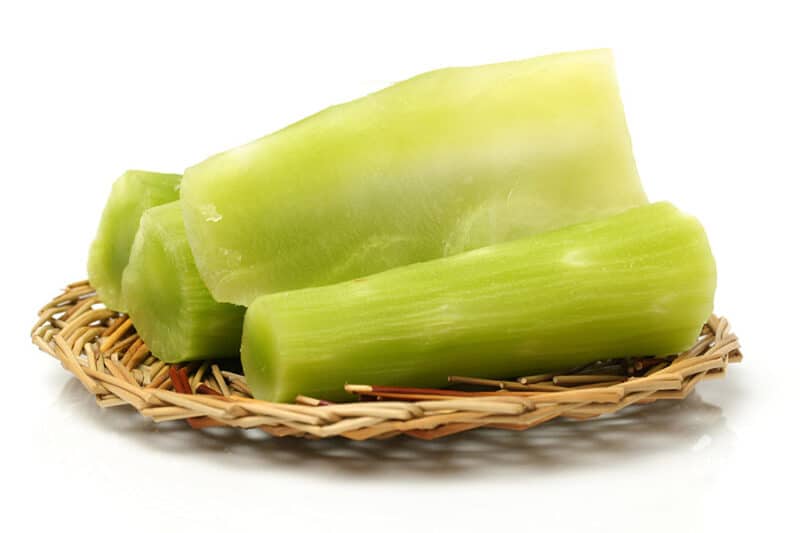
Ideally, the stem should be 12 to 14 inches in length. Peel the skin off and slice. Celtuce can be prepared stir-fried, broiled, fried, or raw.
Grating it into a raw salad adds a wonderful crunch and celery like flavor.
If you’re selling or storing celtuce, cut off the leaves except for the top tuft of foliage. Don’t peel it until you’re ready to eat it or cook with it.
If you can grow enough to sell, it’s a great crop to add to your market stall. Fresh celtuce, grown locally will always be a great seller.
